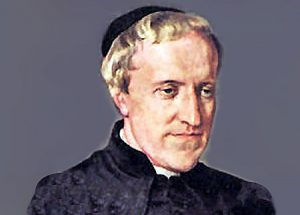The Feast of the Nativity of the Blessed Virgin Mary, the day on which Christians East and West commemorate the birth of Mary, the Mother of God, was celebrated as early as the sixth century. We know that from the fact that Saint Romanos the Melodist, an Eastern Christian who composed many of the hymns used in the Eastern Catholic and Eastern Orthodox liturgies, composed a hymn for the feast at that time. The Feast of the Nativity of the Blessed Virgin Mary spread to Rome in the seventh century, but it took a couple of more centuries before it was celebrated throughout the West.
History of the Feast of the Nativity of the Blessed Virgin Mary
Even though we cannot trace the celebration of the Feast of the Nativity of the Blessed Virgin Mary back any further than the sixth century, the source for the story of the birth of the Blessed Virgin Mary is much older. The earliest documented version is found in the Protoevangelium of James, an apocryphal gospel written about A.D. 150. From the Protoevangelium of James, we learn the names of Mary’s parents, Joachim and Anna, as well as the tradition that the couple was childless until an angel appeared to Anna and told her that she would conceive (many of the same details appear also in the later apocryphal Gospel of the Nativity of Mary).
The Reason for the Date
The traditional date of the feast, September 8, falls exactly nine months after the feast of the Immaculate Conception of Mary. Perhaps because of its close proximity to the feast of the Assumption of Mary, the Nativity of the Blessed Virgin Mary is not celebrated today with the same solemnity as the Immaculate Conception. It is, nonetheless, a very important feast, because it prepares the way for the birth of Christ. It is also an unusual feast because it celebrates a birthday.
Why Do We Celebrate the Blessed Virgin Mary’s Birthday?
The feasts of saints are traditionally celebrated on the day of their death because that is the date on which they entered into eternal life. And, indeed, we also celebrate the Blessed Virgin Mary’s entrance into Heaven on August 15, the Feast of the Assumption.
Saint Augustine connects Mary’s birth with Jesus’ saving work. He tells the earth to rejoice and shine forth in the light of her birth. “She is the flower of the field from whom bloomed the precious lily of the valley. Through her birth the nature inherited from our first parents is changed.” The opening prayer at Mass speaks of the birth of Mary’s Son as the dawn of our salvation and asks for an increase of peace.


